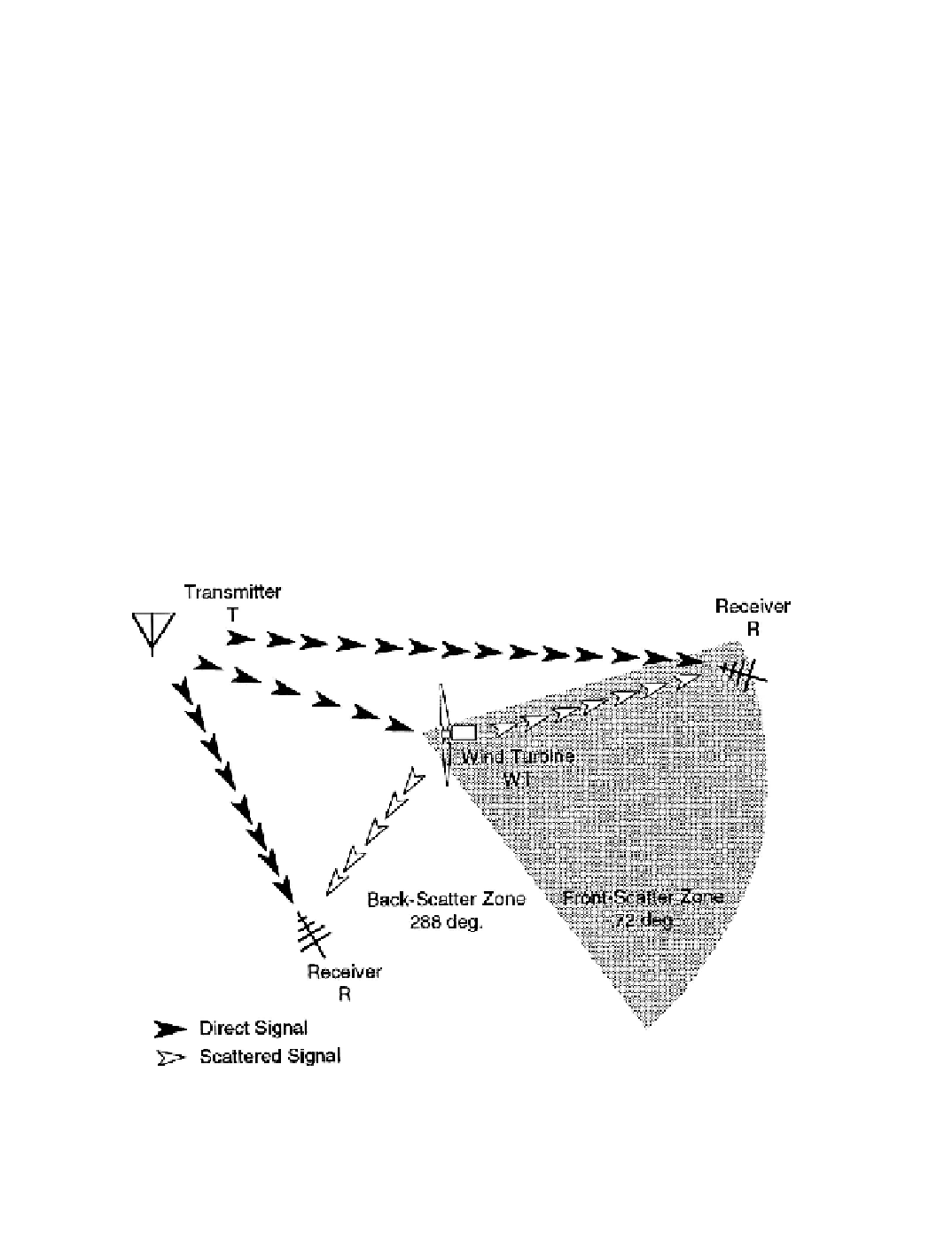Environmental Engineering Reference
In-Depth Information
propagation characteristics in the local atmosphere. When the influence of these parameters
on EMI is understood, wind turbines can usually be designed and sited so that any
interference with communication signals may not exceed allowable levels.
Figure 9-1 illustrates the field conditions under which a wind turbine may cause EMI.
A transmitter,
T
,
sends a
direct signal
to two receivers,
R
,
and a wind turbine,
WT
,
that may
be of either the horizontal- or vertical-axis configuration (HAWT or VAWT). The rotating
blades of the turbine produce and transmit a
scattered signal.
Thus, the receivers may
acquire two signals simultaneously, with the scattered signal causing EMI because it is
delayed in time or distorted. Signals reflected in a manner analogous to mirror reflection
are termed
back-scattered.
As shown in the figure, about 80 percent of the region around
the turbine is the
backward-scatter zone.
On the other hand, signal scattering that is
analogous to shadowing is termed
forward scattering
,
and about 20 percent of the region
around a turbine is the
forward-scatter or front-scatter zone.
Other wind turbine components which have been considered to be potential causes of
EMI are towers and electrical systems. However, neither of these has been found to be a
significant source of interference. Modern wind turbine towers, unlike buildings and water
towers that sometimes cause stationary “ghost” images on television screens, are usually
slender cylinders or trusses which are not efficient reflectors of electromagnetic radiation.
Radio frequency interference
(RFI) caused by signals emitted by generators and motors has
not been observed near wind turbines. Thus, moving rotor blades are the components of
most importance in determining EMI levels, and these are the only components which will
be discussed here.
Figure 9-1. Schematic plan view of the relative positions of a transmitter, receivers,
and a wind turbine that may produce EMI.
Interference is caused by the simultaneous
reception of both the direct and the scattered signals, the latter being delayed or distorted.

Search WWH ::

Custom Search